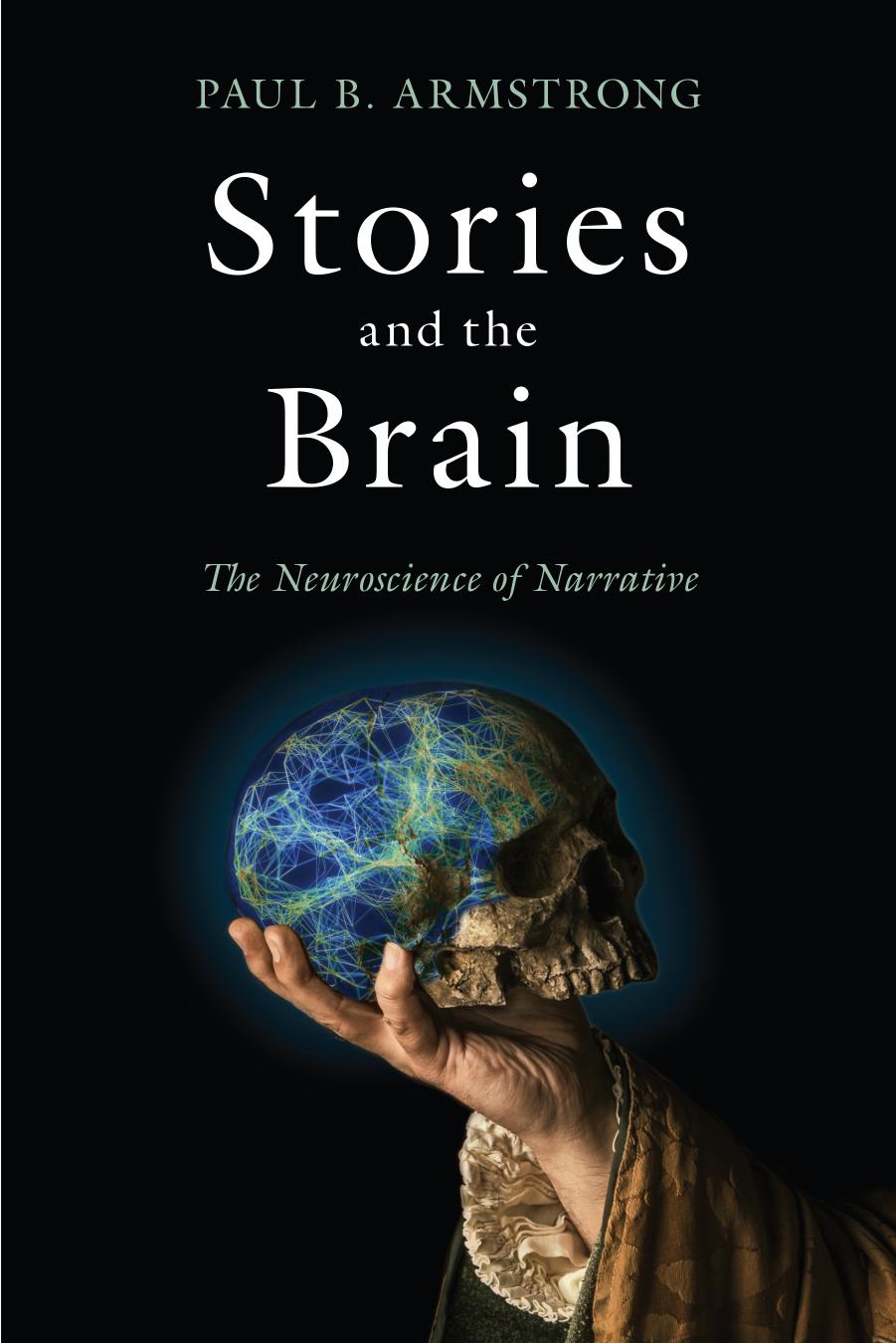Stories and the Brain by Paul B. Armstrong

Author:Paul B. Armstrong
Language: eng
Format: epub, pdf
Publisher: Johns Hopkins University Press
Published: 2020-02-14T16:00:00+00:00
Interactions of Action in Narrative and Narration
Narratives are constituted by the intertwining of different modalities of action, most basically by the interaction between discourse and storyâthat is, the relation between the act of telling and the actions and events emplotted in the told that is fundamental to our capacity to exchange and understand stories. The ability of narratives to bring into relation different kinds of action is grounded in (and can consequently have a powerful effect on) the role of action in coordinating different cognitive processes in our embodied engagements with our worlds. As Berthoz and Petit observe in their authoritative study of The Physiology and Phenomenology of Action (2008, 42â43), the synthesis of âmultiple systems . . . of sense dataâ in the brain is accomplished through action: âThe unity of the perceived world depends upon the extraordinary capacity of the brain which, in the first instance, breaks up the world into multiple components. The world of our lived experience is then the result of a synthesis of the activity of all these stations. . . . The act is an indispensable feature of this unity.â For example, as Merleau-Ponty (2012 [1945], 151) points out, âWhat unites the âtactile sensationsâ of the hand and links them to the visual perceptions of the same hand and to perceptions of other segments of the body is a certain style of hand gestures, which implies a certain style of finger movements and moreover contributes to a particular fashion in which my body moves.â Because the felt unity of embodied experience is generated by the underlying âstyleâ of these interactions, Merleau-Ponty famously declares that âthe body cannot be compared to the physical object, but rather to the work of artâ (152). Narratives are powerful cognitive and existential instruments because of their ability to organize and reorganize action of many different kinds, on different levels, across many perceptual and experiential modalities.
A particular style characterizes different modes of cognition because they are what Alva Noë (2015, 10) calls âorganized activities.â As he explains, âOur lives are one big complex nesting of organized activities at different levels and scales.â These styles of organization are patterns integrating the differences registered by our perceptual equipment, the epistemological habits that develop over our lifetimes of embodied cognitive experience through Hebbian wiring and firing. The style that organizes these perceptual and cognitive modalities characterizes in turn our style of being-in-the-world, the characteristic intentionality (the directedness toward people, states of affairs, and the future) that comes to define our sense of self. Cognitive narrative theorist Guillemette Bolensâs (2012, 22, 28) definition of gesture as âkinesic styleâ encapsulates these linkages: âKinesic styles interconnect all degrees of expressivity. . . . A personâs kinesic style is perceptible in her idiosyncratic movements and the singular way she negotiates social codes and physical constraints, while the kinesic style of a literary work is conveyed through its narrative dynamics.â A personâs distinctive kinesic style has to do with how her different ways of acting in the
Download
This site does not store any files on its server. We only index and link to content provided by other sites. Please contact the content providers to delete copyright contents if any and email us, we'll remove relevant links or contents immediately.
| Administration & Medicine Economics | Allied Health Professions |
| Basic Sciences | Dentistry |
| History | Medical Informatics |
| Medicine | Nursing |
| Pharmacology | Psychology |
| Research | Veterinary Medicine |
Periodization Training for Sports by Tudor Bompa(7929)
Why We Sleep: Unlocking the Power of Sleep and Dreams by Matthew Walker(6363)
Paper Towns by Green John(4806)
The Immortal Life of Henrietta Lacks by Rebecca Skloot(4263)
The Sports Rules Book by Human Kinetics(4079)
Dynamic Alignment Through Imagery by Eric Franklin(3925)
ACSM's Complete Guide to Fitness & Health by ACSM(3827)
Kaplan MCAT Organic Chemistry Review: Created for MCAT 2015 (Kaplan Test Prep) by Kaplan(3805)
Introduction to Kinesiology by Shirl J. Hoffman(3629)
Livewired by David Eagleman(3535)
The River of Consciousness by Oliver Sacks(3421)
The Death of the Heart by Elizabeth Bowen(3342)
Alchemy and Alchemists by C. J. S. Thompson(3299)
Descartes' Error by Antonio Damasio(3168)
Bad Pharma by Ben Goldacre(3103)
The Emperor of All Maladies: A Biography of Cancer by Siddhartha Mukherjee(2934)
The Gene: An Intimate History by Siddhartha Mukherjee(2929)
The Fate of Rome: Climate, Disease, and the End of an Empire (The Princeton History of the Ancient World) by Kyle Harper(2878)
Kaplan MCAT Behavioral Sciences Review: Created for MCAT 2015 (Kaplan Test Prep) by Kaplan(2823)
